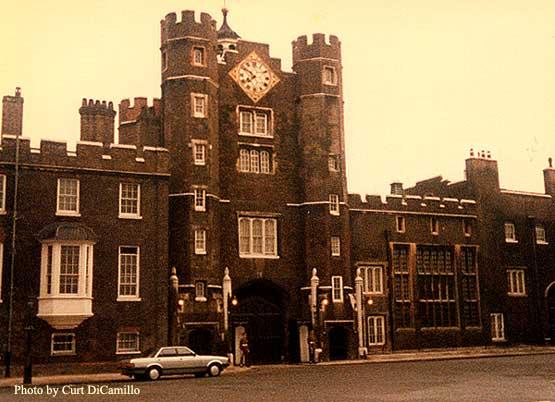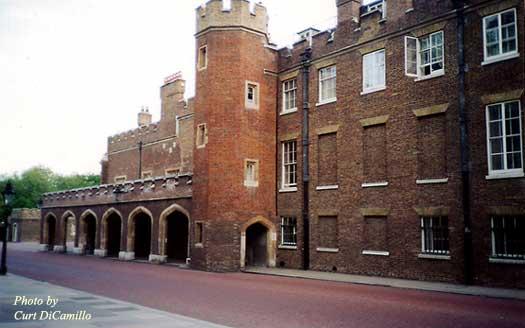
An 1896 photo of the palace from "Round London"


House & Family History: The palace's name comes from the Augustinian hospital for leprous women, the Hospital of St. James, Westminster, that stood on the site in the 13th century. Henry VIII purchased the hospital's land in 1532 to build a small royal palace. Elizabeth I was living at St. James's during the campaign against the Spanish Armada; Charles I was a prisoner in the palace before his execution in January 1649. Charles II, James II, Mary II, and Anne were all born here. St. James's Palace did not become the official residence of the monarch until 1702, when Queen Anne brought the court to St. James's after a 1698 fire burned Whitehall Palace. St. James's remained the sovereign's official residence until Victoria came to the throne in 1837 and moved the court to Buckingham Palace. Each new sovereign is proclaimed from the balcony in the courtyard of Friary Court of St. James's Palace. Though the monarch's actual London residence is today at Buckingham Palace, foreign ambassadors and high commissioners are still formally accredited to the Court of St. James's, and it remains the official seat of the monarchy. In 1952 Elizabeth II made her first speech as queen from St James's Palace.
Chapel & Church: Within the St. James's Palace complex are two chapels: the Queen's Chapel and the Chapel Royal. Considered one of the jewels of Tudor London, the Chapel Royal is one of five such chapels in London, all of whom owe their allegiance directly to the sovereign, not a bishop. The Chapel Royal has had many noted organists and composers; among them were George Frederick Handel (appointed by George II as "Composer of Musick of His Majesty's Chappel Royal"), William Byrd, Orlando Gibbons, and Henry Purcell; Purcell also lived in a suite of apartments in St James's Palace. The Queen's Chapel is located across the street from the palace and is one of the masterpieces of Inigo Jones. Built between 1623 and 1627, it is the first church in England built in a completely classical style. The chapel's large clear glass Palladian (or Venetian) window was probably the first such window in England.
Title: Best Buildings of England, The
Author: Pevsner, Nikolaus
Year Published: 1986
Reference: pg. 122
Publisher: London: Viking
ISBN: 0670812838
Book Type: Hardback
House Listed: Grade I
Park Listed: No Park
Current Seat / Home of: HM The King
Past Seat / Home of: King Henry VIII, 16th century. Queen Anne, 18th century.
Current Ownership Type: The Crown / Royal Family
Primary Current Ownership Use: Private Home
Ownership Details: Owned by the crown and used as a residence for members of the royal family. The palace also contains a conservation center for the Royal Collection.
House Open to Public: By Appointment - Limited Opening Times
Website: https://www.royal.uk/
Historic Houses Member: No